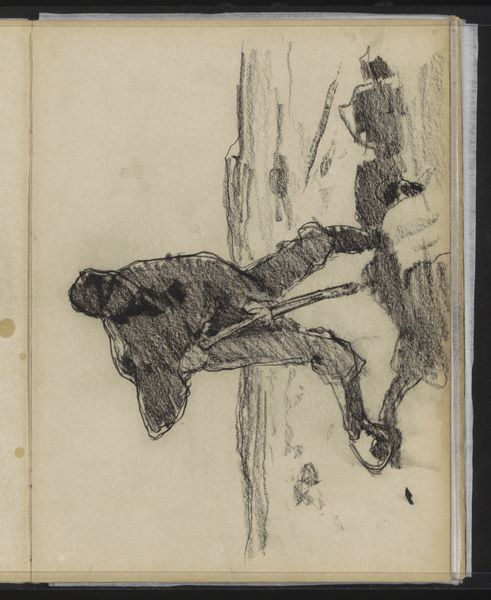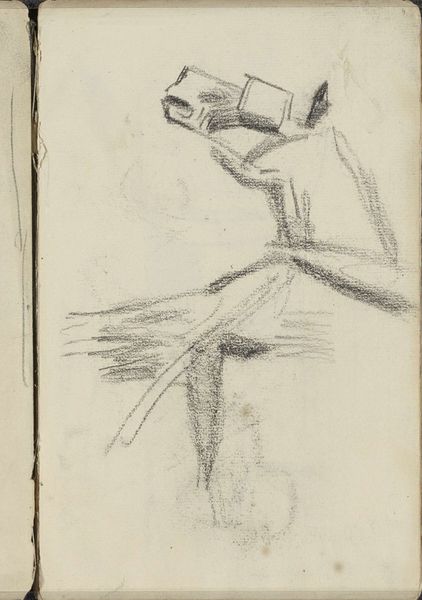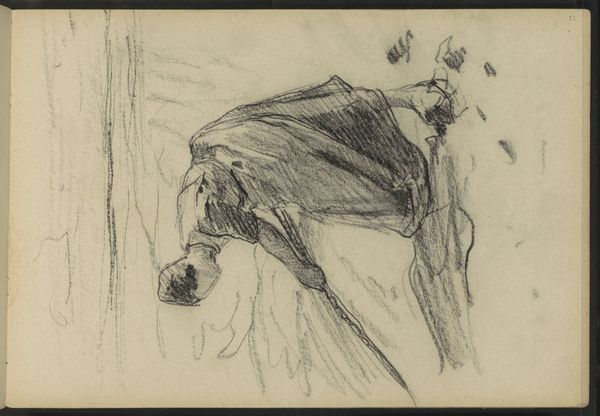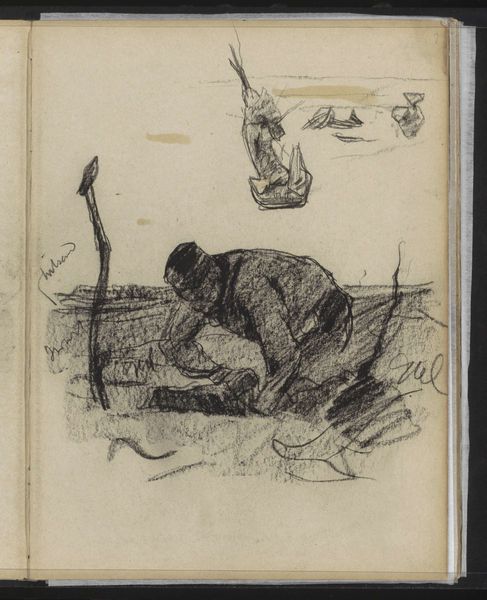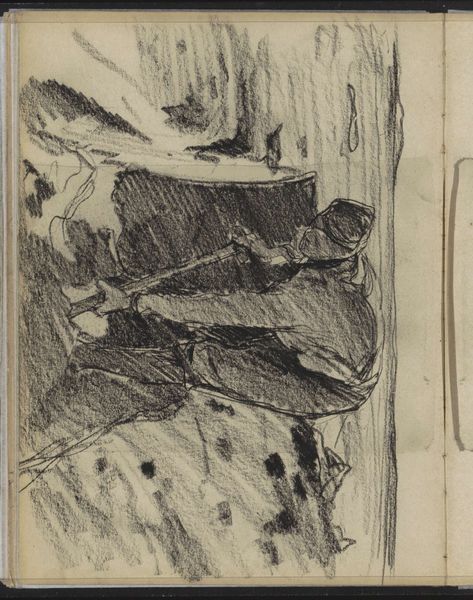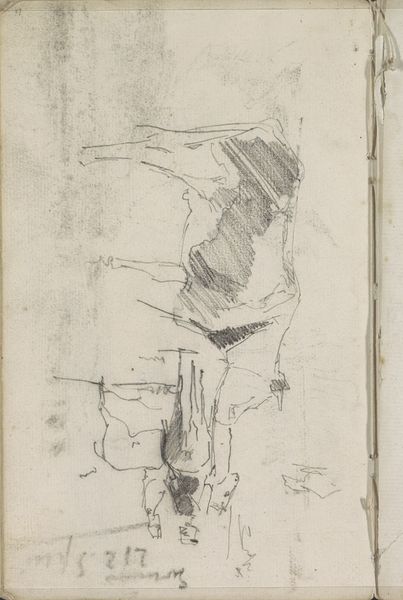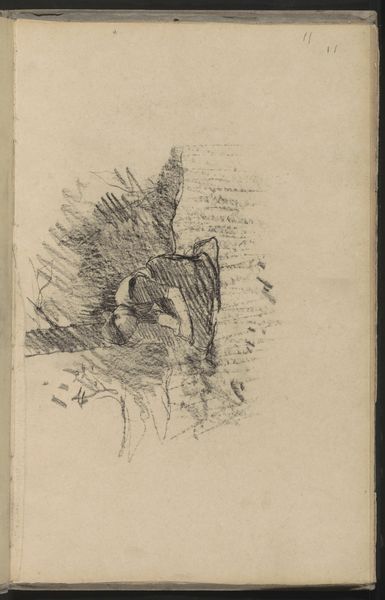
drawing, pencil
#
drawing
#
pencil sketch
#
landscape
#
figuration
#
pencil
#
realism
Copyright: Rijks Museum: Open Domain
Willem Witsen made this pencil drawing of a worker, possibly a pile driver, sometime in his lifetime, between 1860 and 1923. It’s a quick sketch, very immediate, and Witsen may have intended it as a study for a larger work. The immediacy of the sketch, though, lends it a powerful realism. We see the worker straining, caught in a moment of intense physical effort. The Netherlands, around the turn of the century, was a rapidly modernizing nation. As an artist, Witsen was deeply engaged with the changing face of Dutch society. Although he came from a wealthy family, Witsen often turned his eye to the working classes. His images of laborers aren’t romanticized. Instead, he shows us the reality of their labor and its impact on their bodies. As art historians, we might turn to sources such as photography and social surveys to understand the experience of workers in the Netherlands at this time. These sources can help us understand the changing social realities that artists like Witsen sought to capture in their work.
Comments
No comments
Be the first to comment and join the conversation on the ultimate creative platform.


